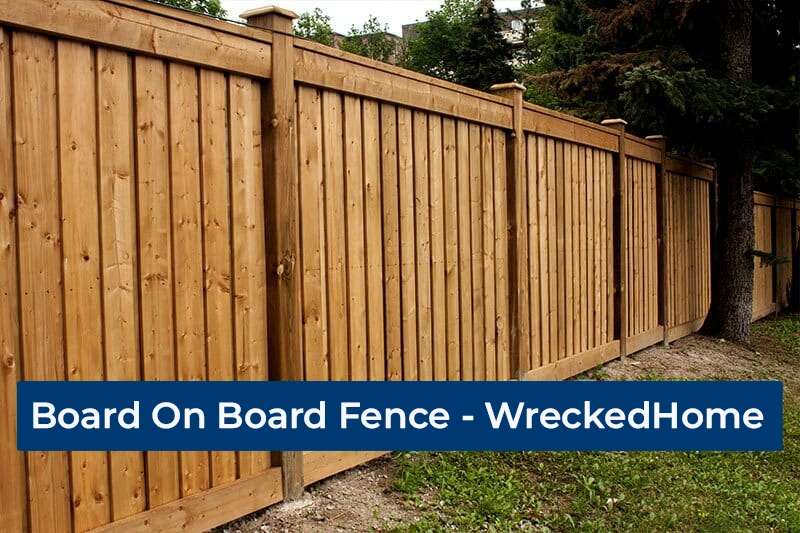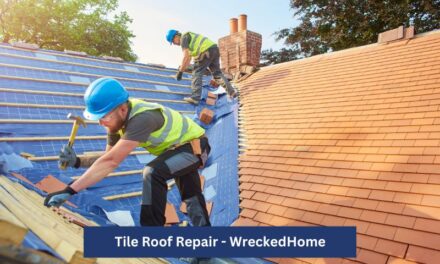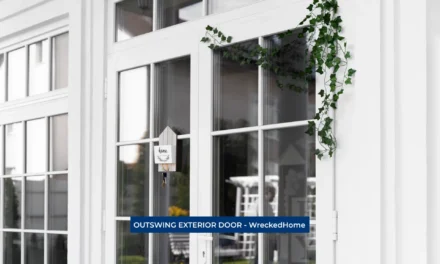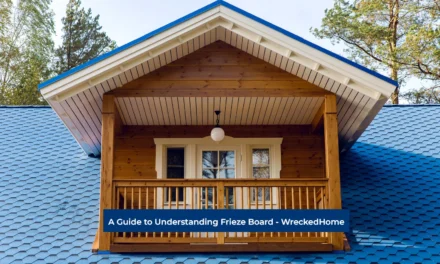The board on board fence is highly popular these days for its increased privacy, security and stability. This fence has a unique overlapping pattern of wood rails that makes it a favorite of homeowners. They use it outdoors as a privacy screen.
If you are also looking for a privacy fence, try board on board fence. It will not disappoint you with all of its added features and benefits. You also have a huge opportunity to select this fence because it is made of different woods. So, let’s discover more. We will explore why it is a better choice, its pros and cons and much more. Lastly, you will also get the secret answer of why the board is called a “good neighbor fence”. So, let dig in!
What is a Board on Board Fence?
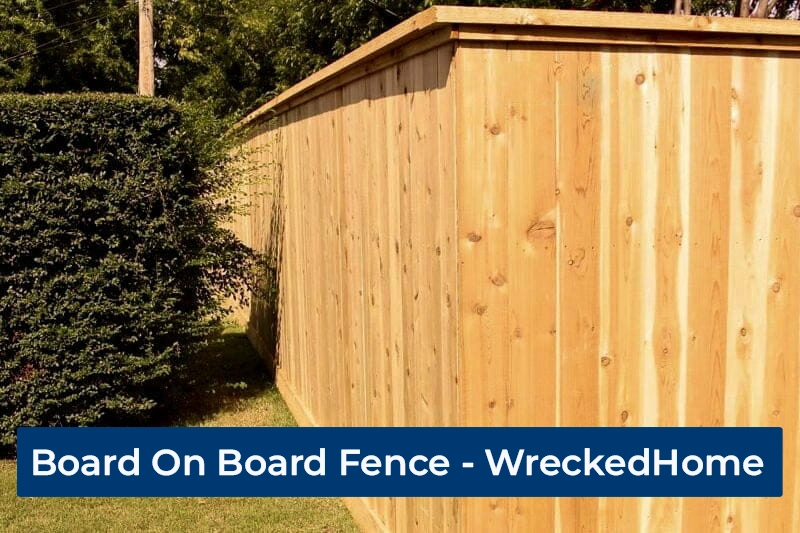
The board is a type of fence with more privacy. The fence has a unique building pattern in which pickets are overlapped to prevent any gaps between the boards.
Normally, wood fences create gaps after installation. This interferes with privacy, but the it has an edge of no gaps or crevices. The wood pickets are tightly secured in an overlapping fashion to the adjacent one, which makes no room for the slits. In fact, the fence provides a textured background to your backyard pavilion.
How Board on Board Fence is better than a Traditional Fence
There is no doubt that the board on board fence is better than a traditional privacy fence. Normally, wood fences are built with panels fixed on the wooden rails. They have a straightforward construction process in which wood panels are attached to the main frame structure, keeping a specific gap between each board.
On the other hand, the board has somewhat different construction criteria. There are pickets, trim and cap. Pickets are long wood panels that make the main body of the fence. They are vertically attached to the horizontal rails, creating an overlapping design so that no gap is left between them.
Trim and cap are additional elements that you can see on the top of the fence. They cover the exposed tops of the pickets for additional security.
Pros
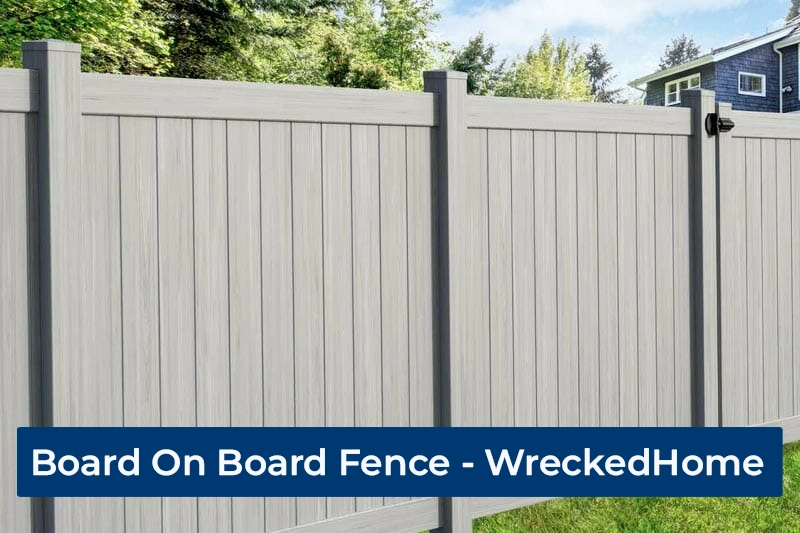
Like every other fence, the board on board type also has its advantages and disadvantages. You need to access its functionality and determine whether it is valuable for you. So, check both the pros and cons of board-on-board fence for in-depth analysis:
Visit our store for 10% off our Home Maintenance products here.
Privacy of Board on Board Fence
Privacy is the first function of fences, and board on board fence has secured a wider trust in this aspect. Due to the overlapping design, there are no gaps, and it offers maximum privacy to the homeowners. If privacy is the top concern at your residence, then installing will be the wisest decision.
Aesthetics
The board on board fence looks highly attractive and adds a decorative element. The alternating board pattern adds depth and texture to the garden or backyard. In fact, It is most liked among homeowners for its three-dimensional texture that makes the space more eye-catching.
Durability
The board is far more durable as compared to the vinyl fence. This is again due to the board attachment pattern that makes them secure at their places. Individual boards age and might wrap or shrink, making the fence weak. While overlapped panels make it less noticeable, and fence lasts for longer.
Customization
Board on board fence is highly customizable, and you have a variety of fencing options. You can use different types of wood materials to build the fence and stain to match your patio furniture or home.
Property value
Fencing makes the property valuable, and the board significantly makes your place worth living. They increase the curb appeal of the home and bring interest in it.
Pets Stress Safety
This is an interesting advantage of the board. This helps reduce pet stress. Most pets get irritated at seeing the neighbor’s pets (if they are not friends) and bark. This barking adds to their stress and makes them feel uncomfortable. On the other hand, with no gaps limits visibility, making your pets happy at their place.
Cons
Here are the cons :
Maintenance
The board on board fence needs regular maintenance to preserve its original appearance and increase longevity. The maintenance includes staining or sealing to protect it from moisture, rot or pests. An irregularly maintained fence leads to premature deterioration.
Cost
Board on board fence is comparatively expensive to build or purchase compared to standard privacy fences. For instance, same length of in your garden can take double the amount of budget in comparison to a regular fence. This is because of the material and labor cost that takes more of your budget. Overlapping needs more panels to create the fence, and as the boards overlap by 1 to 1 ½ inches, they increase the number of boards. You may be surprised that requires 30% more wood pickets than a singly layered fence. So, an increase in budget sounds valid.
Installation Complexity
Installing wood pickets on this fence design is complex and time-consuming. If you are designing the fence independently, it will take you considerable time to install all pickets at the right place. Then overlapping is also a thing. You little ignorance can ruin all your efforts and the fence outlook.
Limited Airflow and Visibility
The board is quite bad at limiting air flow and visibility (if you want to see far away). As the fence provides wind resistance, it also blocks the flow of air. So, it is not widely recommended in hot and dry areas where good ventilation is required. Similarly, such type of fence blocks the view. It will be challenging to enjoy the scene beyond your property.
Weight
The additional boards and construction complexity can make heavy. You need to install stronger posts and deeper post holes that add to its strength but also makes it heavy.
Types of Wood Used for Board on Board Fence
If you plan to have board on board fence at your place then do not go unplanned. Make sure you know all the types of woods you can choose from. So, here are the type of woods that are used to design.
| Wood Variety | Hardness | Color | Grain Pattern | Durability/Resistance |
| Cedar Wood | Soft | Light reddish-brown | Straight, uniform | Highly durable due to natural preservatives (thujaplicins) |
| Redwood | Soft to Medium | Pinkish-red to deep reddish-brown | Mostly straight | High durability, similar to cedar |
| Pressure-treated Pine | Variable (soft to medium) | Greenish or yellowish (due to treatment), turns gray over time | Variable; can be straight to wavy | Treated with copper-based preservatives for resistance to decay, rot, and insects |
| Cypress | Medium | Pale yellow to reddish-brown | Straight, closed grain | Naturally rot and insect resistant. |
Cedar Wood
Cedar is one of the most durable woods for board on board fencing. It can last for decades or centuries. Some compounds (thujaplicins) in the material act as natural preservatives and make the wood extremely long-lasting. Similarly, the wood surface is even and quite good at accepting stains. Above all, cedar wood is economical, and you can design the fence without breaking the bank.
Redwood
Redwood is another excellent option for the board on board outdoor fences, and the material is known for its high durability like cedar. Woods’ even surface makes care and maintenance easy. Plus, rich, reddish-brown hue of the wood adds warmth and texture to your place.
Pressure Treated Pine
If you are looking for budget-friendly, durable wood for your board-on-board fence, then pressure-treated pine offers everything. The wood is specially treated with preservatives (copper-based compounds) to make it resistant to decay, rot and insect infestation. Above all, the wood is easy to cut, shape and drill, proving best DIY project material for fencing.
Cypress
Cypress is a highly durable and resistant wood that offers a great choice for homeowners looking for fence woods. Cypress has the advantage of being lightweight. As previously mentioned, it’s quite heavy for double wood panels, so using a lightweight construction material can make the fence lightweight. Similarly, you can use this wood in humid regions because it has excellent moisture resistance.
Why Board on Board Fence is called a Good Neighbor Fence?
It’s called “good neighbor” for its friendly design that looks equally good from homeowners and neighbors. It maintains a consistent and attractive appearance for the vertical board installed in an organized way. You do not see any patches or uneven surfaces. In fact, overlapping the pickets make the front and back side balanced, giving the neighbors an edge. They also enjoy visually appealing fence and the privacy. So, if you want to make fence keeping your neighbors happily satisfied, go for the neighbor-friendly.
Conclusion
In conclusion, the board-on-board fence stands out as a highly popular choice among homeowners. It is prized for its superior privacy, security, and stability. Its distinctive overlapping design ensures there are no gaps or crevices, offering unmatched privacy in outdoor spaces. If you also want to enjoy at your private residence without any interruption then the board on board fence is the best choice for you.
For any repairs, installations, builds, or questions; We recommend you to hire a professional. Find A Pro Near You Here!

